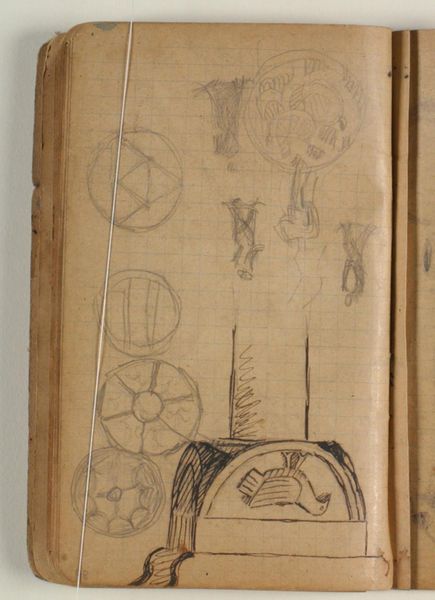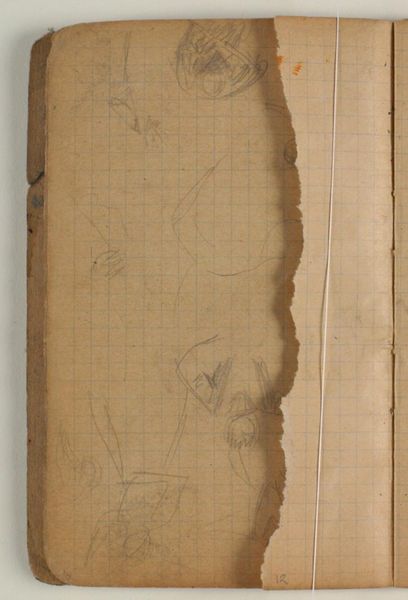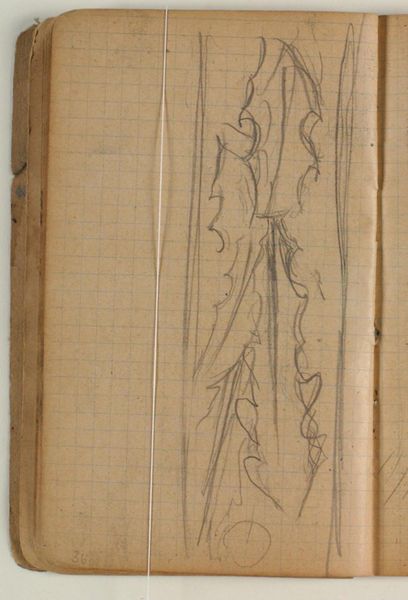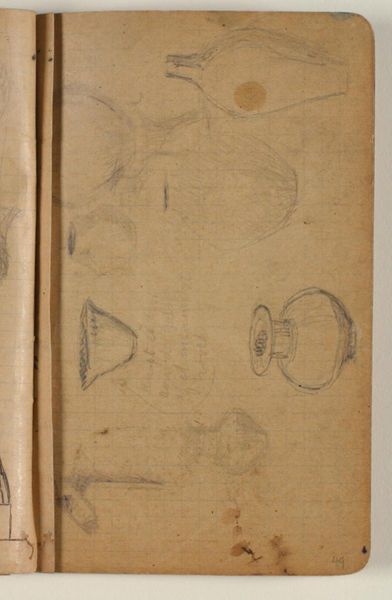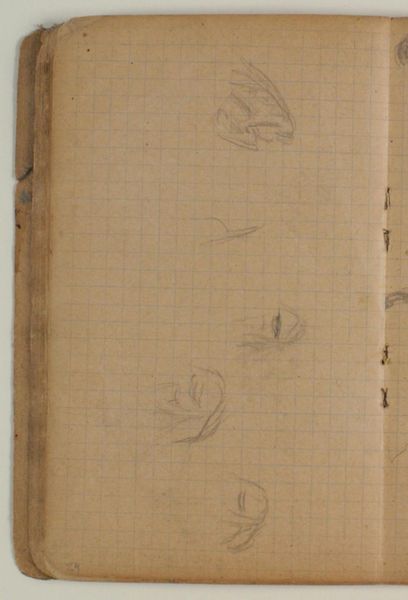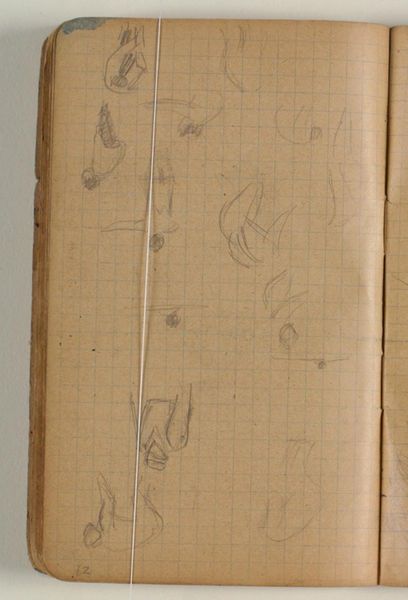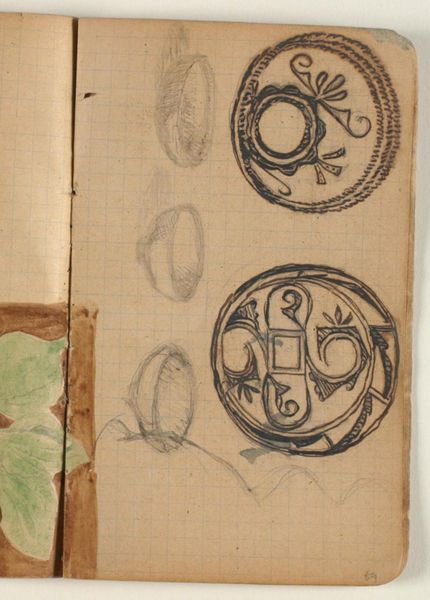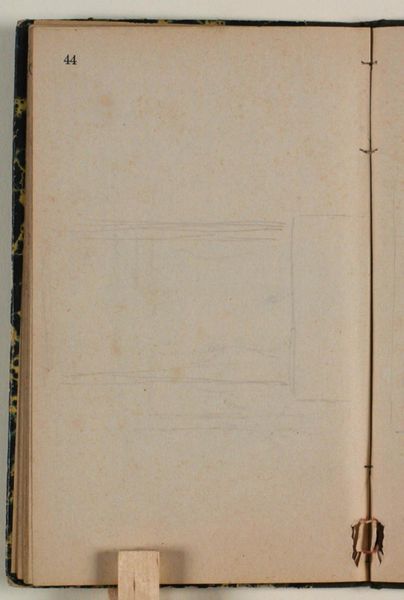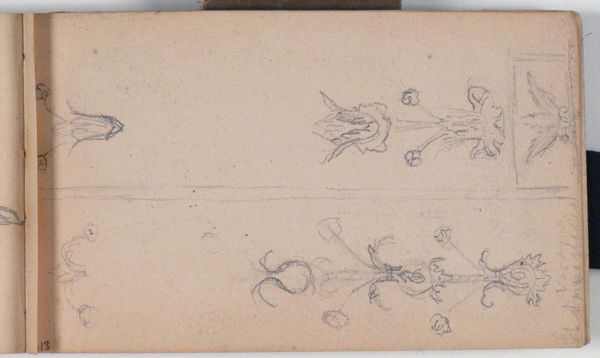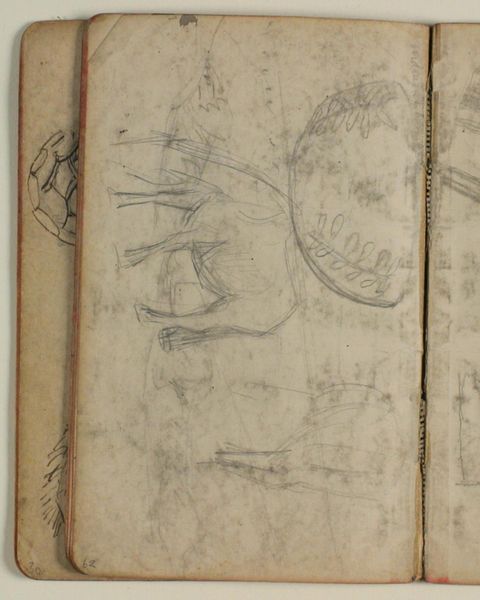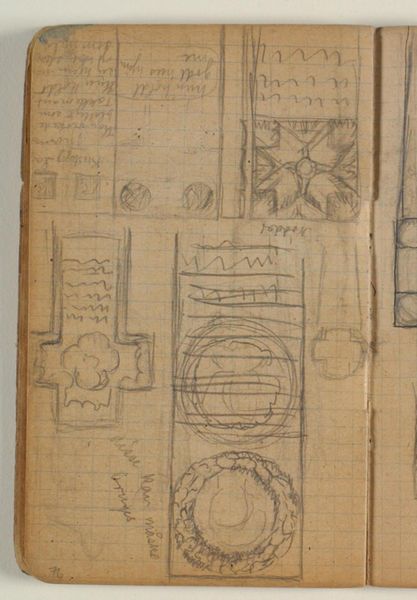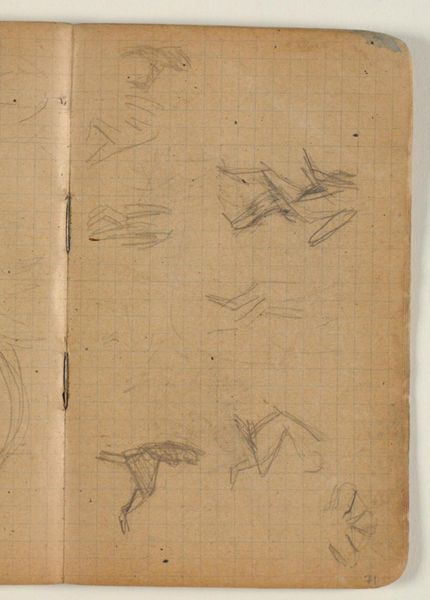
Skitse af figurer og medaljon med figurpar, samt notat 1906
0:00
0:00
drawing, paper, pencil
#
drawing
#
figuration
#
paper
#
coloured pencil
#
geometric
#
pencil
#
sketchbook drawing
Dimensions: 163 mm (height) x 97 mm (width) (bladmaal)
Editor: So, this is "Sketch of Figures and Medallion with Pairs of Figures, and Note," by Niels Larsen Stevns, from 1906. It looks like it’s done in pencil and colored pencil on paper. The brown paper and faded lines give the drawing this casual feel. What do you see when you look at this work? Curator: I notice how the means of production—the humble pencil and the readily available paper—democratize the artistic process. This wasn’t a commissioned piece; it’s an intimate glimpse into the artist’s studio practice, perhaps even an everyday object. Notice also the inscription along the lower margin. What impact might those notations have had upon the figures? Editor: I see what you mean. It feels more like a page torn from a workbook rather than some high art thing, and it humanizes Stevns’ process. It looks like he's figuring something out, not necessarily trying to make something refined. Do you think that because this drawing appears raw and somewhat incomplete that this artwork fails to resolve meaning for us? Curator: Not at all. This rawness challenges the traditional notion of "finish" within fine art. It asks us to value the artist's labor and process. The marks on the page—the graphite, the colored pencil—aren't just lines, but physical evidence of thought and intention. Think about where he may have gotten his materials; were they scraps? Were these factory-made pencils and uniform sheets, suggesting an increasingly industrial art world? Editor: So, by examining the material quality and Stevns’ process, we can think more critically about art and challenge traditional distinctions? Curator: Precisely. Instead of just admiring the final "product," we start understanding art as the outcome of concrete actions, and choices influenced by historical and cultural context. Editor: That gives me a completely different perspective on the sketch, I was previously concerned about surface value alone. Curator: Considering the materials and the artist’s actions gives us so much more.
Comments
No comments
Be the first to comment and join the conversation on the ultimate creative platform.

